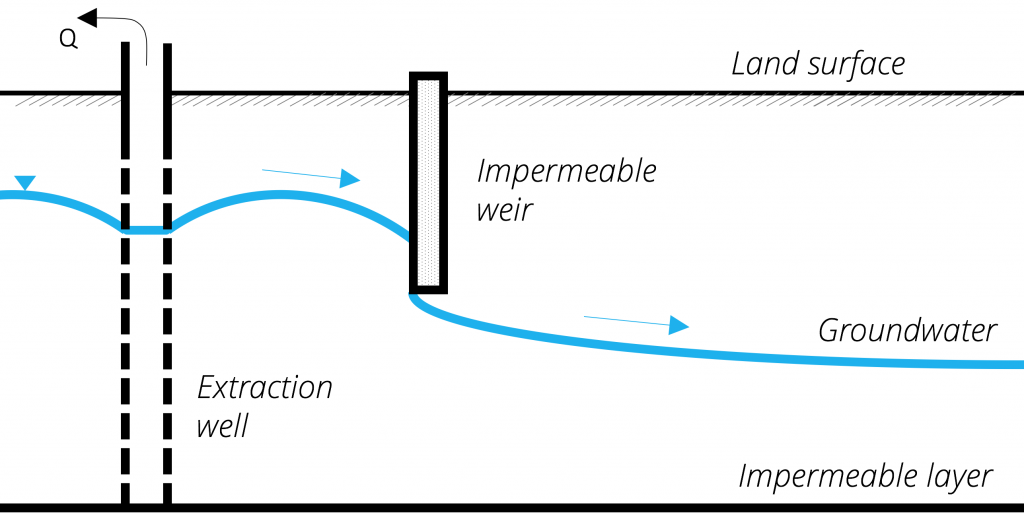
Subsurface dams are barriers of low permeability that are constructed underground. These structures reduce or stop the lateral flow of groundwater in order to store water below ground and elevate the groundwater table. To construct a subsurface dams, a trench is built across a stream or valley until the depth of the bedrock or a layer of clay is reached. Within the trench, an impervious or low permeability wall is constructed and the trench is afterwards filled with the excavated material.
| Typical system capacity scale | Village – Town (≈104 m3/year – ≈106 m3/year). |
| Geology | Unconfined aquifers with an impervious layer located a few meters below the surface. |
| Topography | Natural drainage channels, mainly on intermittent or ephemeral stream conditions. |
| Soils | Unconsolidates sands and gravels. |
| Water source | River water. |
| Pre-treatment | No pretreatment is used. |
| MAR main objective | Water storage. |
| Relative cost | Low. |
Advantages and disadvantages of the system (adapted from IGRAC, 2007):
Advantages
- Low costs of construction.
- Low maintenance.
- No interference with other land use.
Limitations
- Potential ownership conflicts.
- Relatively small infiltration rates.
- Quality control of the dam may be difficult.
- Very specific sub-surface characteristics need to me met.
Case studies
Further information
- https://www.sswm.info/content/sand-dams-and-subsurface-dams
- http://www.samsamwater.com/library/Sub_surface_dams_-_a_simple_safe_and_affordable_technology_for_pastoralists.pdf
References
- Sswm.info. (2017). Sand Dams and Subsurface Dams | SSWM. [online] Available at: https://www.sswm.info/content/sand-dams-and-subsurface-dams [Accessed 29 Nov. 2017].
-
IGRAC. (2007). Artificial Recharge of Groundwater in the World.
DEMEAU. (2014). Characterization of European managed aquifer recharge (MAR) sites – Analysis.
